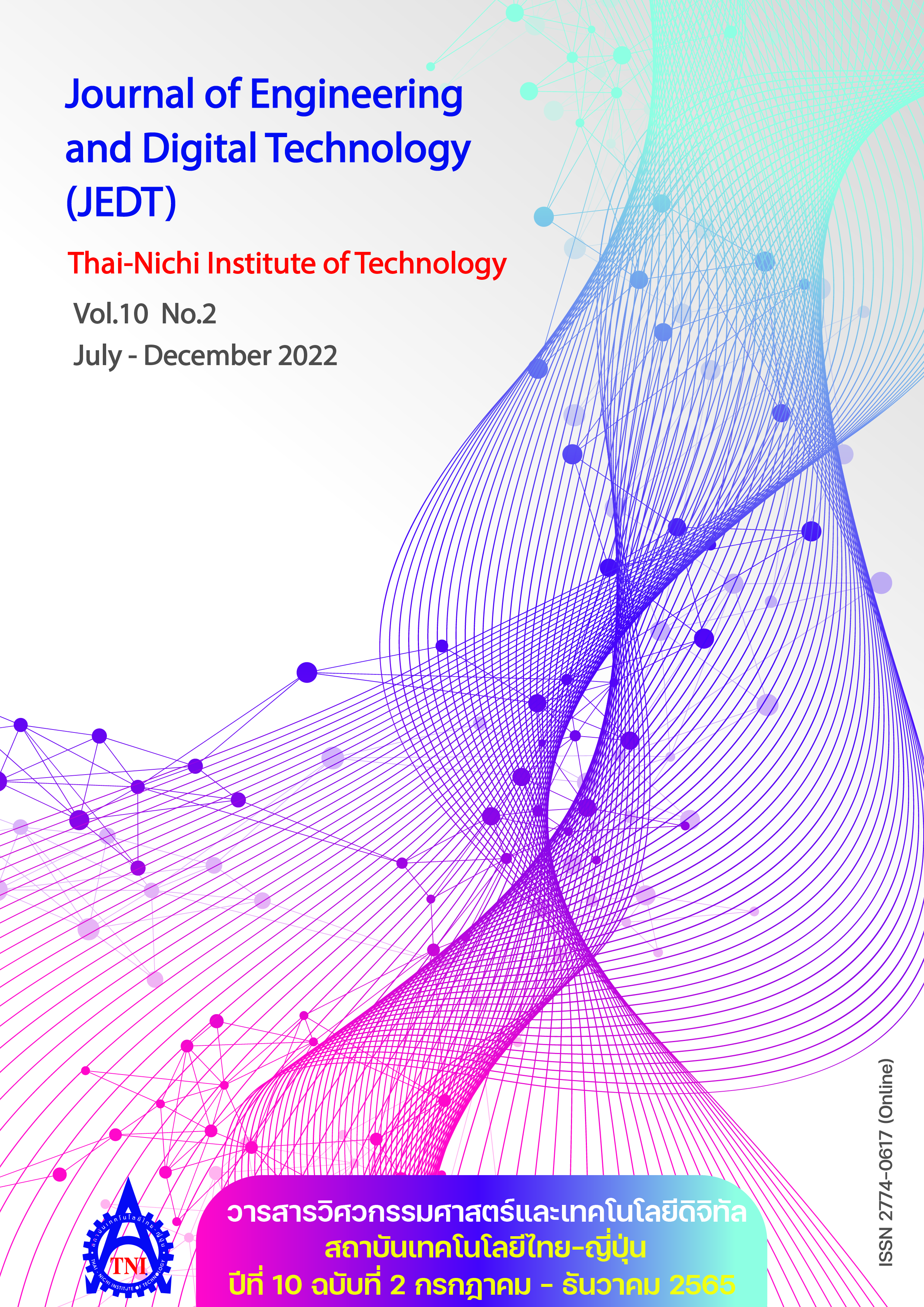Analysis of Disease Spread with Mathematical Models for Foot and Mouth Disease in Thailand
Main Article Content
Abstract
Foot and mouth disease is a contagious disease of animals. It was found that it spreads out in the late rainy season and the early winter in every year. It is caused by seven aphthoviruses: A, O, C, SAT 1, SAT 2, SAT 3 and Asia 1. In Thailand, only three aphthoviruses was found (i.e., A, O and Asia 1). These viruses were found in the secretions, milk and semen of the infected animals. Since the pandemic is significant, we studied the problems from the reports of the pandemic of the foot and mouth disease from 2013–2022, analyzed and searched for the solutions by creating the mathematical model(s) of the foot and mouth disease, finding the balance point(s) of the model(s), considering the numerical results and identifying the conditions of the stability(ies) of disease free equilibrium state and disease endemic equilibrium state. The results were shown in the form of basic reproductive numbers. The numerical results were analyzed for controlling the disease and providing the guidelines for reducing the pandemic of the foot and mouth disease.
Article Details

This work is licensed under a Creative Commons Attribution-NonCommercial-NoDerivatives 4.0 International License.
Article Accepting Policy
The editorial board of Thai-Nichi Institute of Technology is pleased to receive articles from lecturers and experts in the fields of engineering and technology written in Thai or English. The academic work submitted for publication must not be published in any other publication before and must not be under consideration of other journal submissions. Therefore, those interested in participating in the dissemination of work and knowledge can submit their article to the editorial board for further submission to the screening committee to consider publishing in the journal. The articles that can be published include solely research articles. Interested persons can prepare their articles by reviewing recommendations for article authors.
Copyright infringement is solely the responsibility of the author(s) of the article. Articles that have been published must be screened and reviewed for quality from qualified experts approved by the editorial board.
The text that appears within each article published in this research journal is a personal opinion of each author, nothing related to Thai-Nichi Institute of Technology, and other faculty members in the institution in any way. Responsibilities and accuracy for the content of each article are owned by each author. If there is any mistake, each author will be responsible for his/her own article(s).
The editorial board reserves the right not to bring any content, views or comments of articles in the Journal of Thai-Nichi Institute of Technology to publish before receiving permission from the authorized author(s) in writing. The published work is the copyright of the Journal of Thai-Nichi Institute of Technology.
References
Bureau of Disease Control and Veterinary Services, Department of Livestock Development, “Epidemic Situation,” (in Thai), 2022. [Online]. Available: http://esmartsur.net/Report_Situation.aspx
T. Yano et al., “Foot and Mouth Disease outbreak in Chiang Mai and Lamphun Area during 2007-2011,” (in Thai), Chiang Mai Vet. J., vol. 11, no. 3, pp. 277–287, 2013.
M. J. Keeling, “Models of foot-and-mouth disease,” Proc. Biol. Sci., vol. 272, no. 1569, pp. 1195–1202, Jun. 2005, doi: 10.1098/rspb.2004.3046.
S. Mushayabasa, C. P. Bhunu, and M. Dhlamini, “Impact of vaccination and culling on controlling foot and mouth disease: A mathematical modelling approach,” World J. Vaccines, vol. 1, no. 4, pp. 156–161, Nov. 2011, doi: 10.4236/wjv.2011.14016.
T. Chanchaidechachai, M. C. M. de Jong, and E. A. J. Fischer, “Spatial model of foot-and-mouth disease outbreak in an endemic area of Thailand,” Prev. Vet. Med., vol. 195, Oct. 2021, Art. no. 105468.
S. Mushayabasa, D. Posny, and J. Wang, “Modeling the intrinsic dynamics of foot-and-mouth disease,” Math. Biosci. Eng., vol. 13, no. 2, pp. 425–442, Apr. 2016, doi: 10.3934/mbe.2015010.
M. Kobayashi, T. E. Carpenter, B. F. Dickey, and R. E. Howitt, “A dynamic, optimal disease control model for foot-and-mouth-disease: II. Model results and policy implications,” Prev. Vet. Med., vol. 79, no.2-4, pp. 274–286, May 2007, doi: 10.1016/j.prevetmed.2007.01.001.
W. J. Klaring and W. Timischl, “Mathematical models for the spread and control of foot-and-mouth disease during the 1973 epidemic in Austria,” Biom. J., vol. 21, no. 7, pp. 675–680, 1979, doi: 10.1002/bimj.4710210711.
F. Mugabi, J. Mugisha, B. Nannyonga, H. Kasumba, and M. Tusiime, “Parameter-dependent transmission dynamics and optimal control of foot and mouth disease in a contaminated environment,” J. Egypt. Math. Soc., vol. 27, Dec. 2019, Art. no. 53. doi: 10.1186/s42787-019-0058-1.
A. H. Cabezas, M. W. Sanderson, and V. V. Volkova, “A meta-population model of potential foot-and-mouth disease transmission, clinical manifestation and detection within U.S. Beef Feedlots,” Front. Vet. Sci., vol. 7, Sep. 2020, Art. no. 527558, doi: 10.3389/fvets.2020.527558.
L. Edelstein-Keshet, Mathematical Models in Biology. New York, NY, USA: Random House, 1998.
K. Abodayeh, M. S. Arif, A. Raza, M. Rafiq, M. Bibi, and A. Nazeer, “Numerical techniques for stochastic foot and mouth disease epidemic model with the impact of vaccination,” Adv. Differ. Equ., Jan. 2020, Art. no. 34.
P. G. Smith, “Concepts of herd protection and immunity,” Proc. Vaccinol., vol. 2, no. 2, pp. 134–139, 2010.
T. Changpuek, P. Pongsumpun, and I. M. Tang, “Analysis of mathematical model for swine flu transmission by age group,” Far East J. Math. Sci. (FJMS), vol. 73, no. 2, pp. 201–229, 2013.
W. Mumtong, P. Pongsumpun, and I. M. Tang, “Analysis of model for menstrual cycle with the effect of body mass index,” Far East J. Math. Sci. (FJMS), vol. 93, no. 2, pp. 243–266, 2014.

